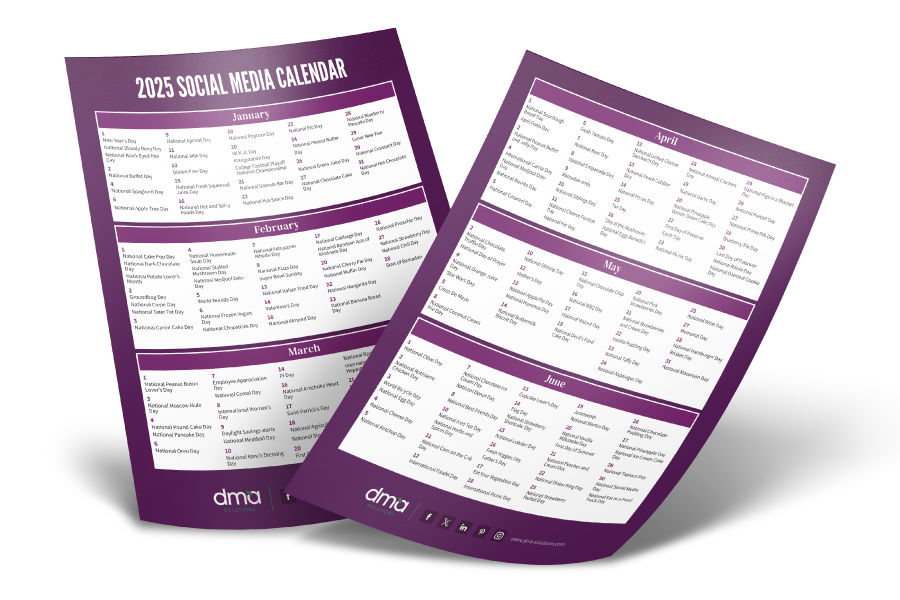How much do you know about the different types of traffic that come through your website? What about how to measure exactly how engaged your audience is with your brand? Let’s face it: it is nearly impossible to engage in strategic marketing without an adequate understanding of the tools available to help measure the success of your efforts. To that end, we’ve created a helpful glossary of basic marketing analytics terms and why they are important for your brand.
Marketing Analytics Glossary
Total Brand Impressions
Total brand impressions encompasses the overall number of views that your brand receives from all marketing efforts (this will include social media and public relations impressions). Note: if one person views your content two times, both views will be included in the impressions total.
Total Brand Views
Like total impressions, total brand views includes the number of views generated by marketing activities completed on behalf of your brand. However, brand views differs in that an individual who views your content multiple times will only be included in your total brand views once.
Tips for brand impressions and brand views
Both of these metrics provide insight into the overall performance of your marketing efforts and help guide strategic decisions for your brand. For example, a high number of brand impressions—as compared to overall brand views—signals that the content you have created is resonating with your audience because they are engaging with it more frequently. This is an indication that similar content will likely continue to be successful for your brand going forward.
Database
The database contains contacts—and relevant information you have collected about your contacts—you have compiled who support your brand in some way (for example, they may have opted in to receive your weekly blog or newsletter). While many marketers subscribe to a specific service that helps manage that information, others prefer to just maintain a customer email list. Both of these are common and workable approaches.
Contact Conversions
“Contact conversion” is the term signaling that a new contact has been added to your database. This conversion may have come from a promotion, social media advertising, interactions at industry events, and other marketing activities by your brand.
Subscribers
Subscribers are contacts within your database who have “opted in,” or agreed to receive a specific type of communication or content from your brand. Some examples include: blog subscribers and people who have requested to be notified of new product releases or sent trade newsletter updates.
Tips for your database, contact conversions, and subscribers
All three of the above metrics are indicators of your audience’s investment into your brand. As you work through a strategy for your marketing plan, keep in mind that the efforts resulting in the highest contact conversion (be sure to note what specific types of content your contacts are subscribing to!) are a reflection of what your audience is most interested in—and where you should likely focus more of your time and resources.
Website Visits
This metric is rather self-explanatory, given that it simply refers to the number of visits to your website during a given time period, but it is certainly too important to exclude!
Traffic Sources
Traffic sources provide insight into where your website traffic is coming from. It is important to know each of the following types of website traffic:
- Organic Searches: Site visitors who use a search engine, such as Google, to find websites based on keywords are categorized as organic search traffic.
- Email Marketing: This reflects the number of visitors who come to your website via links in an email.
- Referrals: Referrals encompass other websites that link back to yours. If you work with influencer partners or place online advertisements, for example, visitors from these sources are gathered under referrals.
- Social Media Referrals: These visitors to your site clicked a link posted on social media, whether from an organic or sponsored post.
- Direct: A website visit is categorized as direct traffic any time a visitor types a direct URL or clicks from a bookmark. Note: with visits for which no referral source is detected, these also will be categorized as direct traffic.
Tips for website visits and traffic sources
As you analyze your website traffic sources, you should see a correlation between marketing activities and increased traffic. For example, if you launch a new advertising campaign on social media, you should observe a significant increase in social media referrals to your website. If you do not see an increase, it is a signal that you should be asking some pointed questions to understand why your marketing efforts did not effectively increase traffic.
Email Open Rate
This refers to the number of contacts who opened your email, typically expressed as a percentage. The email open rate is calculated by dividing the number of contacts who opened your email by the total number of people to whom you sent the email. While a healthy email open rate varies widely by industry, business size, location, and other factors, one commonly accepted benchmark is to aim for open rates of between 12% and 15% for marketing emails specifically.
Email Click-Through Rate
The click-through rate is the number of contacts who both opened your email and clicked on a link within the email, typically expressed as a percentage. The email click-through rate is calculated by dividing the number of contacts who clicked a link in the email by the number of contacts who were sent your email. According to the IBM 2016 Email Marketing Benchmark Study, the average click-through rate in the United States sits at about 3.3%, though this also varies by industry. As a general rule, we suggest aiming for a click-through rate of 3.5% to 5%.
Tips for email open and click-through rates
Both open and click-through rates are important metrics that help guide strategy and determine the success of your email campaigns. Marketers should strive to create content that consistently achieves a healthy rate for both. If meeting these rates is a challenge with your current method, it is an indicator that a new approach to your emails may be necessary.
Keeping a close eye on these metrics will help provide you with context as you plan your strategy for achieving your brand goals. Have additional questions, or want to add any metrics that you find valuable in measuring the success of your marketing efforts? Leave us a comment below or tweet us at @TheCoreBlog!
{{cta(‘24043446-f144-4c3f-b7a5-5313ea354b57’)}}












